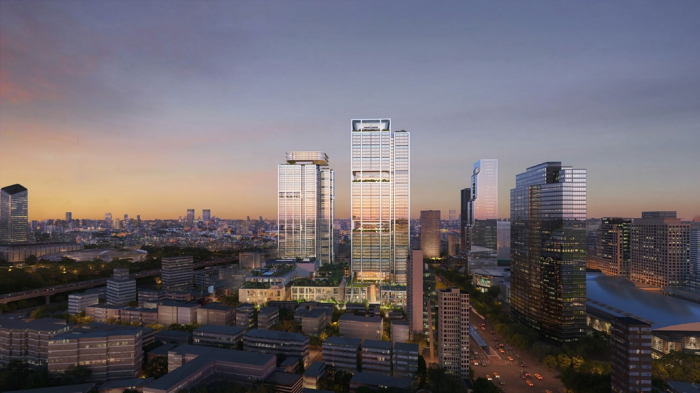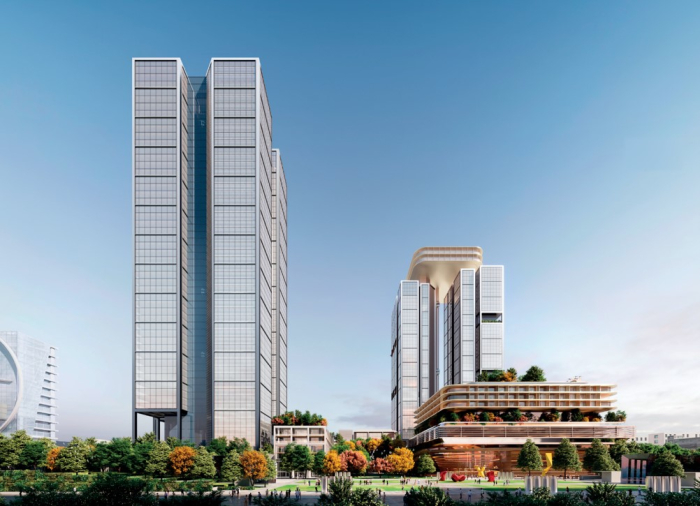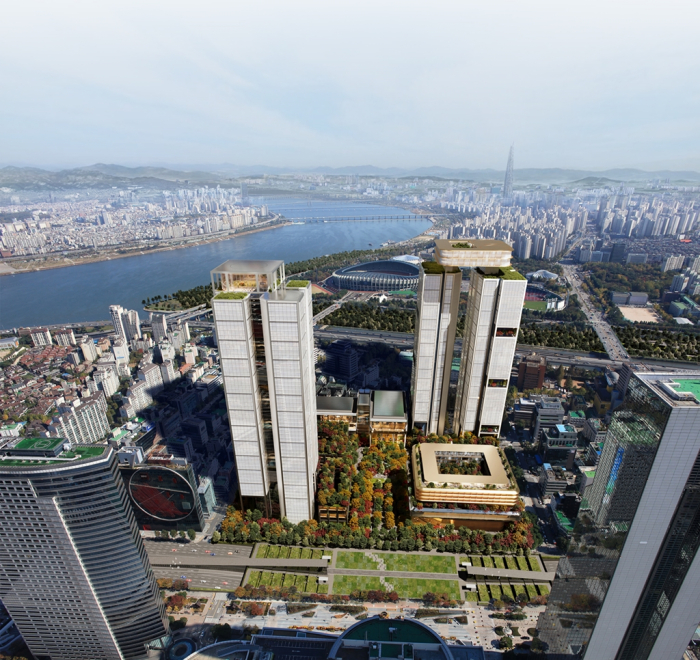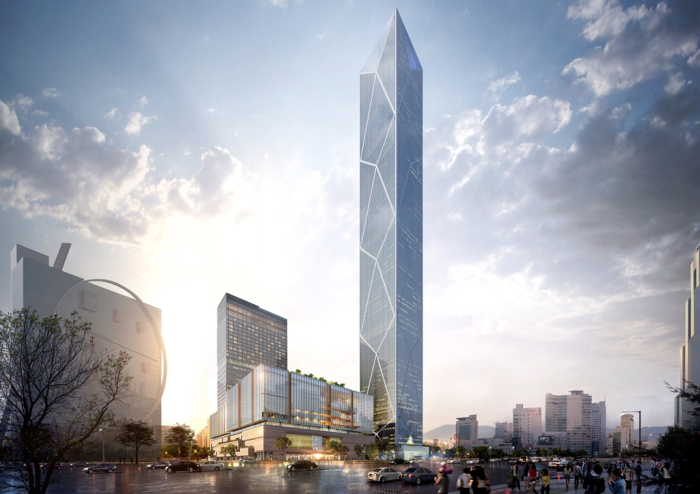Corporate strategy
Hyundai Motor unveils detailed $3.4 billion GBC new headquarters plan
The GBC was designed by London-based Foster & Partners, known for eco-friendly building technology
By May 20, 2024 (Gmt+09:00)
3
Min read
Most Read
When in S. Korea, it’s a ritual: Foreigners make stops at CU, GS25, 7-Eleven


Maybe Happy Ending: A robot love story that rewrote Broadway playbook


NPS yet to schedule external manager selection; PE firms’ fundraising woes deepen


US auto parts tariffs take effect; Korea avoids heavy hit


NCSOFT invests in US game startup emptyvessel



South Korea’s top automaker Hyundai Motor Group on Monday unveiled detailed plans for its 4.6 trillion won ($3.4 billion) new headquarters, or the Hyundai Global Business Complex (GBC), set for completion in 2026.
The complex will be composed of six buildings, including two 55-story main towers with a height of 242 meters (794 feet) each, plus four annexed buildings for various purposes such as exhibitions, culture programs and convenience facilities, Hyundai said.
The automotive group previously dubbed the new headquarters a global business center but said it now calls it a “complex” to show its commitment to eco-friendly buildings for business as well as clean residential areas for Seoul citizens.
“The GBC is the innovation base for our future mobility business as well as a large-scale green space for Seoul. We expect the complex to be Korea’s new landmark for futuristic design, sustainability and innovation,” Hyundai said in a statement.

“We look forward to approval of the GBC project by the Seoul Metropolitan Government as early as possible,” said an official at Hyundai Motor Group, Korea’s third-largest conglomerate in terms of assets.
REVISED PLAN
Back in 2016, the automaker said it would build a 105-story skyscraper to pull all its affiliates together under one roof.
Hyundai Motor Group affiliates include Hyundai Motor Co., Kia Corp., auto parts maker Hyundai Mobis Co., Hyundai Engineering & Construction Co. (Hyundai E&C) and Hyundai Rotem Co.
Hyundai Motor and Kia together are the world’s third-largest automaker by sales after Toyota Motor and Volkswagen.
The plan, however, ran into objections from the Korean Air Force over safety concerns and Hyundai executives due to heavy costs.

Hyundai changed the original plan later and said it would build two 55-story buildings and annexed facilities.
The city government is said to prefer a 105-story skyscraper for Hyundai’s headquarters.
The construction of Hyundai’s new headquarters in Samseongdong, a neighborhood in Seoul’s upscale business district of Gangnam, will require 4.6 trillion won in investment by 2026 and create 9,200 new jobs by then, according to Hyundai.
The automaker said it expects to spend 19.5 trillion won in total by 2030 with the creation of some 56,000 jobs by then to expand and upgrade the GBC.
The company said construction work will begin in the second half of next year upon approval by the Seoul Metropolitan Government.
URBAN FOREST CITYSCAPE
The Hyundai GBC was designed by Foster & Partners, a London-based international architecture firm known for eco-friendly building technology.

Founder Norman Foster, an English architect and designer, is considered a world-class eco-friendly architect who values harmony between humans and nature, according to Hyundai.
The two tower buildings, the main business facilities, will be arranged diagonally with an urban forest at the center of the complex.
Hyundai said the lower floors of the high-tech tower buildings will house cultural facilities for exhibitions, conventions and performance halls.
The upper floors will feature an observatory and premium hotel rooms, it said.
The urban forest was designed with the concept of an “urban forest cityscape.”
Hyundai said the amount of its contribution to the public is estimated at 2.1 trillion won.
“In line with our agreement with the Seoul city government, we will faithfully carry out our public contribution projects such as the Yeongdong-daero intermodal transfer center and the remodeling of Jamsil Stadium,” said a Hyundai official.
Write to Jae-Fu Kim at hu@hankyung.com
In-Soo Nam edited this article.
More to Read
-
 Corporate strategyHyundai Motor aims for next takeoff with $51 billion investment
Corporate strategyHyundai Motor aims for next takeoff with $51 billion investmentMar 27, 2024 (Gmt+09:00)
3 Min read -
 AutomobilesHyundai Motor Group holds firm as world’s No. 3 carmaker
AutomobilesHyundai Motor Group holds firm as world’s No. 3 carmakerJan 21, 2024 (Gmt+09:00)
1 Min read -
 Future mobilityHyundai mulls downsizing skyscraper for future mobility
Future mobilityHyundai mulls downsizing skyscraper for future mobilityDec 06, 2020 (Gmt+09:00)
6 Min read
Comment 0
LOG IN


